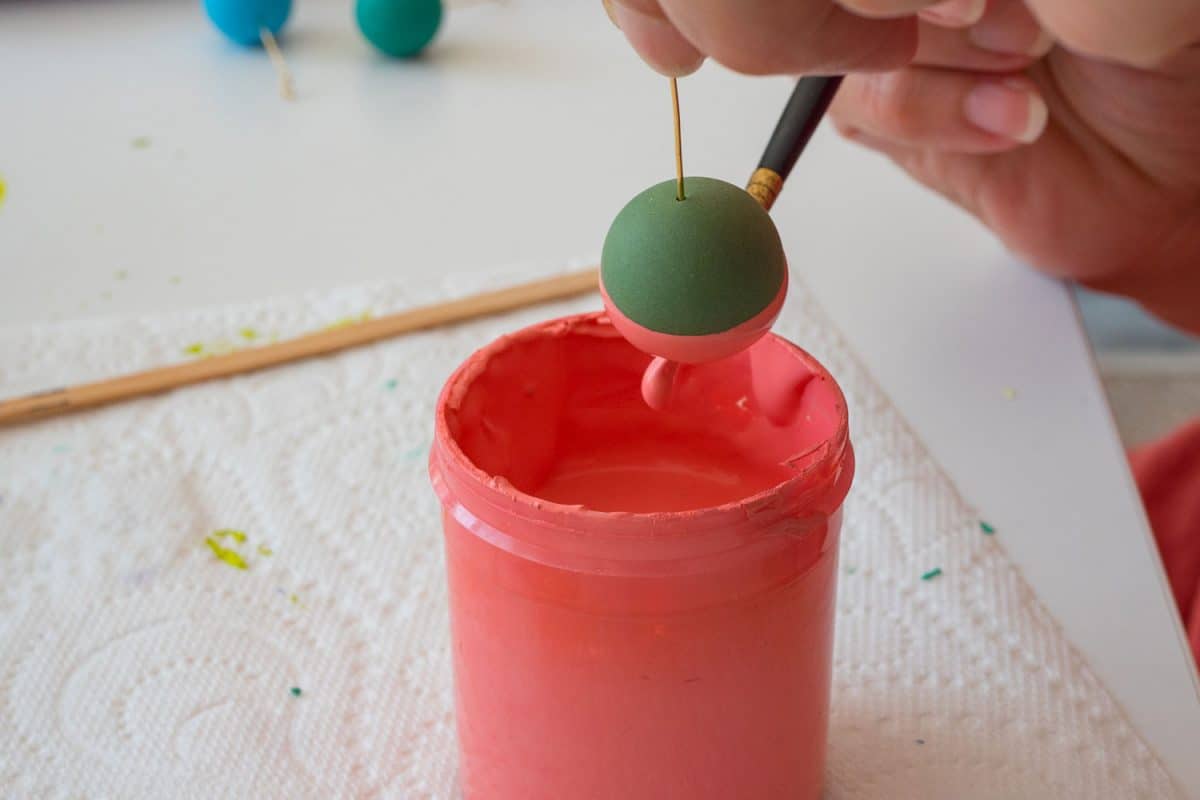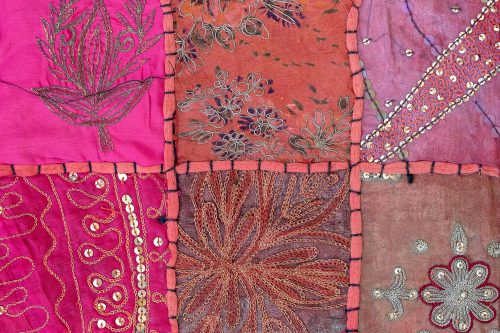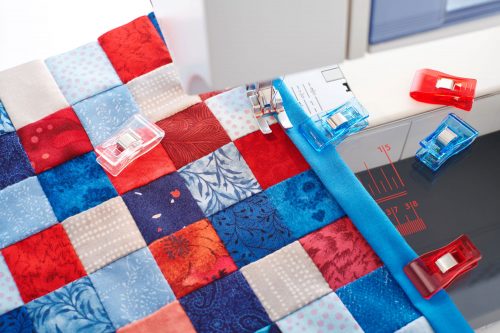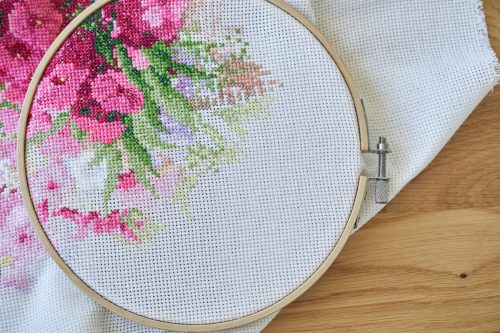There are many benefits to using varnish on polymer clay. Not only can varnish help the colors really pop, but it can also hide small imperfections and help to secure embellishments. But if you've never used it before, you may be wondering what the best varnish to use on polymer clay is. We've done the research to take the guesswork out of the equation.
The all-around best varnish to use for polymer clay is a polyurethane glaze that is water-based. But you can also use:
- Epoxy resin
- Liquid acrylic
- Polymer clay branded glaze
- Mod Podge
But with so many options out there, how can you ever decide which one to use? That's why we've created this guide that covers what to look for when choosing a varnish for polymer clay. We'll also discuss why each type of recommended varnish works so that you can make the best decision to suit your needs. Continue reading to learn more.

Choosing A Varnish For Polymer Clay: What To Look For
When choosing a varnish for polymer clay, different types can have different effects. You will also want to consider how durable the finish will be and your budget. Here are some suggestions for how to choose.
Base Ingredient
The first thing you will want to consider is the base ingredient that the glaze is made of. Solvent and oil-based varnishes can actually react negatively with the polymer clay. By using them, you may accidentally ruin your creations. The best varnishes to use for polymer clay should be water-based.
Durability
Depending on what type of polymer clay craft you are making, durability should be one of the major factors you consider when choosing a glaze. For example, for polymer clay jewelry that will get a lot of wear and also come into contact with oils on your skin, you will want a varnish that can withstand wear and tear.
With that being said, you will want to choose a varnish that forms a tougher coat when it hardens. Polyurethane varnish and epoxy resin both have a reputation for forming a harder film and holding up over time. They can also withstand more wear and tear due to outside elements.
Sheen
Just like paints come in different levels of sheen, so do varnishes. Examples of different sheens include:
- Matte
- Satin
- Semi-gloss
- High-gloss
Which one you choose just depends on what you want the finished product to look like. The level of sheen can typically be found somewhere on the product label. But in general, polyurethane varnishes and epoxy resins have a more glossy sheen, whereas acrylic glazes will provide a more matte finish.
Application Type
Varnishes also come in different application forms. By that, we mean that some are spray on and some are brush or paint on. You'll want to consider how easy a particular varnish is to apply, but you should also be aware of which application types can potentially damage your creation.
For example, spray-on varnishes are the easiest to apply, but they can be corrosive which could damage your product. Although they aren't as easy to use, brush-on glazes are better for polymer clay. And you don't have to just brush them on, you can sponge them on as well. Just remember to use water-based varnishes that won't damage your creation and will make cleaning your brushes easier.
Budget
The last thing you'll want to consider is your budget. You'll tend to get a lot of bang for your buck by choosing a polyurethane varnish because you'll get more product for less money. Acrylic glazes, PVA glue, and polymer clay brand glazes are also affordable but won't give you as much product. Epoxy resin is probably the most expensive varnish due to the properties and durability that it provides.
So Which Varnish Should You Choose?

Now that you know what to look for in a varnish, let's look at each recommended type and why it will work well for your project.
Water-Based Polyurethane
In terms of quality and budget, this is the all-around best type of varnish to use for polymer clay. It's affordable, durable, and often can be purchased in different levels of sheen. You'll likely find polyurethane varnish in gloss, semi-gloss, and satin finishes.
Click here to see this polyurethane gloss varnish on Amazon.
Epoxy Resin
Although this is the most expensive type of recommended varnish, it's sure to pay off in terms of quality and durability. However, using epoxy resin will only give your projects a glossy finish, because it isn't as widely available in satin or matte.
Click here to see this epoxy resin kit on Amazon.
Liquid Acrylic
Out of all the products listed, liquid acrylic varnish is the most versatile for crafting. It is typically used for paintings, but it also works on polymer clay. And, it will really help colors stand out while also protecting against yellowing and. Plus, it can usually be purchased in gloss, satin, and matte finishes.
Click here to see this liquid acrylic varnish on Amazon.
Polymer Clay Branded Varnish
A polymer clay branded varnish is any varnish that is branded by a particular polymer clay brand. For example, the particular brand of clay you use may also sell varnish for the clay as well. This is a great choice if you're unsure about other types of varnish. If you know that the clay you use is high-quality, then you can expect the varnish to be as well.
Click here to see this Sculpey brand varnish on Amazon.
Can you use Mod Podge to seal polymer clay?
Mod Podge is a watered-down PVA glue that can also be an effective varnish. This is one of the best varnishes to use if you want a matte finish, but it can also be purchased in a glossy finish as well. Plus, it is one of the more budget-friendly types of varnish.
Click here to see this matte finish Mod Podge on Amazon.
How Do You Seal Polymer Clay After Baking?
You don't have to seal polymer clay after baking it. Sealing is usually done to protect paint or embellishments or give it a shiny effect, not necessarily to protect the clay itself. But if you want to, you can seal polymer clay after baking it by using any of the following methods listed above.
The method that you use just depends on the type of varnish you choose. The best option for sealing polymer clay is to simply paint the varnish onto the clay. But if you use epoxy resin, the resin itself has to be mixed with a hardening agent before you can apply it. Otherwise, it won't harden. Just be sure to follow the directions on the packaging.
See More: Can Polymer Clay Air Dry Without Baking?
Can You Paint Polymer Clay After Baking?

When painting polymer clay, the best paint to use is acrylic paint. With that being said, you can use acrylic paint on polymer clay either before or after baking. Painting it before you bake it will help the paint to adhere better, but you should make sure that both the paint and clay are completely dry before baking it.
It's also totally okay to paint polymer clay after baking. Some people prefer to wait until the clay is hard in order to better maintain the color or design. But if you choose to paint after baking, be sure that the clay has completely cooled first.
See More: Can You Draw On Polymer Clay?
How Do You Seal Paint On Polymer Clay?
If you paint on polymer clay, it is best to wait until the paint is completely dry so that it doesn't smear or ruin your design. Ideally, you used acrylic paint to paint polymer clay. If that's the case, you will want to use a liquid acrylic sealer to seal the paint. Acrylic sealers are water-based and designed to work with acrylic paint, so they won't ruin your project.
How Do You Add Shine To Polymer Clay?
The best way to add shine to polymer clay is by adding a glossy varnish after baking it. Usually, polyurethane, acrylic, or epoxy resin varnishes all come in glossy finishes and will give you a high level of shine. If you want shine, avoid using varnish with a satin or matte finish.
Can You Use Nail Polish To Glaze Polymer Clay?
It's not a good idea to use nail polish to glaze polymer clay. This is because nail polish is not water-based. Instead, it contains chemical solvents which can soften or potentially dissolve polymer clay over time even if the clay has already hardened. Be sure to only use water-based glazes on polymer clay.
In Closing
The best all-around varnish to use for polymer clay in terms of sheen, affordability, and quality is water-based polyurethane varnish. But, other glazes such as epoxy resin, liquid acrylic, and even Mod Podge can be used depending on your budget and what you want the finished project to look like.









![Read more about the article What Materials Can Be Used To Make Mosaics? [15 Great Options]](https://craftsbliss.com/wp-content/uploads/2021/02/A-gorgeous-circular-mosaic-art-with-using-different-kinds-of-materials-500x333.jpg)
